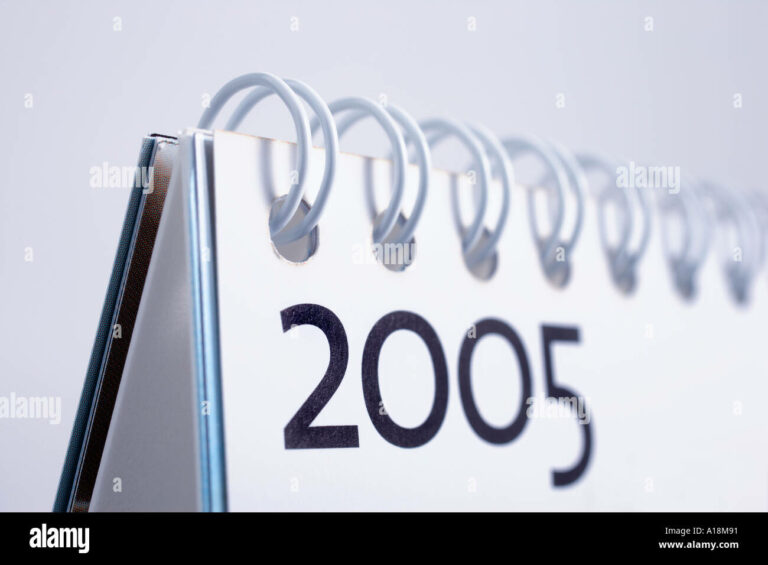3.7L Jeep Engine For Sale: Your Comprehensive Guide to Finding the Right Powerhouse
3.7L Jeep Engine For Sale: Your Comprehensive Guide to Finding the Right Powerhouse jeeps.truckstrend.com
The Jeep brand embodies adventure, rugged capability, and a spirit of freedom. For many Jeep enthusiasts, the 3.7-liter PowerTech V6 engine has been a reliable workhorse, powering models like the popular Liberty, Grand Cherokee, and Commander through countless miles of on-road commutes and off-road escapades. However, like any mechanical component, even the most durable engines eventually reach the end of their service life, or unforeseen circumstances necessitate a replacement. This is where the quest for a "3.7L Jeep engine for sale" begins, opening up a world of options for keeping your beloved Jeep roaring.
This comprehensive guide is designed to navigate you through the process of understanding, sourcing, and ultimately acquiring the ideal 3.7L Jeep engine for your needs. Whether you’re a seasoned mechanic looking for a project or a Jeep owner seeking a cost-effective replacement, understanding the nuances of the market is crucial.
3.7L Jeep Engine For Sale: Your Comprehensive Guide to Finding the Right Powerhouse
Understanding the Heart of Your Jeep: The 3.7L PowerTech V6
Before diving into the market, it’s essential to appreciate the engine you’re looking for. The 3.7-liter PowerTech V6, often referred to as the "EHG" engine code, is a single overhead camshaft (SOHC) V6 engine produced by Chrysler. It shares a common architecture with the larger 4.7L PowerTech V8, making it a robust and well-understood design.
Key Specifications and Applications:
- Displacement: 3.7 Liters (226 cubic inches)
- Configuration: SOHC V6
- Horsepower: Typically ranged from 210-215 hp
- Torque: Approximately 235 lb-ft
- Applications:
- 2002-2012 Jeep Liberty (KJ/KK)
- 2005-2010 Jeep Grand Cherokee (WK)
- 2006-2010 Jeep Commander (XK)
- Also found in some Dodge Dakota, Ram 1500, and Durango models.


Known for its decent low-end torque, which is beneficial for off-roading and towing light to medium loads, the 3.7L V6 has earned a reputation for being a generally reliable and straightforward engine. Its widespread use means there’s a healthy aftermarket for parts and, crucially, a good supply of complete engines for sale.
Why Opt for a Used or Remanufactured 3.7L Jeep Engine?

The decision to replace an engine often boils down to cost versus benefit. For many Jeep owners, acquiring a used or remanufactured 3.7L engine presents a highly attractive alternative to a brand-new crate engine or a costly overhaul of their existing unit.
Key Benefits Include:
- Cost-Effectiveness: This is arguably the primary driver. A quality used or remanufactured engine can save you thousands compared to buying new from a dealership.
- Availability: Due to the sheer number of Jeeps and other vehicles that utilized this engine, finding a suitable replacement is relatively easy.
- Sustainability: Giving a pre-owned engine a second life is an environmentally conscious choice, reducing waste and the demand for new manufacturing.
- Direct Fit: For models originally equipped with the 3.7L, a replacement engine is typically a direct bolt-in, simplifying the installation process.
- Preserving Your Vehicle: For those who love their Jeep but face a major engine issue, a replacement engine can breathe new life into the vehicle, extending its lifespan and enjoyment.
Navigating the Market: Types of 3.7L Jeep Engines For Sale
When searching for a 3.7L Jeep engine, you’ll encounter a few distinct categories, each with its own price point, risk level, and benefits. Understanding these distinctions is crucial for making an informed decision.
-
Used Engines (Salvage/Junk Yard Engines):
- Description: These are engines pulled directly from donor vehicles, often from accident-damaged cars or those with other issues, but where the engine itself was still functional or in good condition.
- Pros: Lowest initial cost. Quickest availability.
- Cons: Highest risk. Condition varies widely. Limited or no warranty is common. Mileage can be high. May require significant cleaning and replacement of seals/gaskets.
- Best For: Budget-conscious buyers, experienced mechanics who can thoroughly inspect and perform necessary maintenance.
-
Rebuilt Engines:
- Description: An engine that has been disassembled, inspected, and had specific worn or broken components replaced (e.g., piston rings, bearings, gaskets, seals). The block and heads may be machined as needed.
- Pros: Better reliability than a typical used engine. More affordable than remanufactured.
- Cons: Quality varies significantly depending on the rebuilder’s expertise and the parts used. Warranty periods can be shorter.
- Best For: Those seeking a balance between cost and reliability, with a preference for local rebuilders who offer a personal touch.
-
Remanufactured Engines:
- Description: The most comprehensive overhaul process. The engine is completely disassembled, cleaned, inspected, and machined to original factory specifications. All wear components (pistons, rings, bearings, valves, guides, camshafts, oil pump, timing components) are replaced with new or reconditioned parts. They undergo rigorous testing.
- Pros: Closest to a new engine in terms of performance and reliability. Often come with substantial warranties (e.g., 1-3 years, unlimited mileage). Minimal risk.
- Cons: Highest cost among replacement options (excluding brand new crate engines).
- Best For: Those prioritizing long-term reliability, peace of mind, and a strong warranty.
Key Considerations Before You Buy
Purchasing an engine is a significant investment. Take your time and consider these crucial factors:
- Source Reliability: Buy from reputable suppliers, whether it’s a well-established salvage yard, an authorized remanufacturer, or a specialized engine dealer. Check reviews and testimonials.
- Donor Vehicle Information (for used engines): Ask for the VIN of the donor vehicle. This can sometimes provide insights into its history (e.g., accident reports, maintenance records if available).
- Mileage (for used engines): While lower mileage is generally preferred, the condition is more critical. A well-maintained higher-mileage engine might be better than a neglected lower-mileage one.
- Inspection and Testing:
- Visual Check: Look for obvious signs of damage, cracks, excessive corrosion, or missing components. Check the oil pan for excessive sludge.
- Compression Test: If possible, get compression test results for used engines. Consistent readings across all cylinders are a good sign.
- Oil Pressure Test (if applicable): Some sellers might provide video of the engine running with oil pressure readings.
- Leak Down Test: Even better than a compression test for diagnosing internal issues.
- Warranty: Always inquire about the warranty. Used engines might have a very limited warranty (e.g., 30-90 days), while remanufactured engines typically offer 1-3 years. Understand what the warranty covers (parts, labor, towing) and what voids it.
- Compatibility: While the 3.7L is widely used, confirm the specific year and model compatibility. Minor variations in sensors, mounts, or wiring harnesses can exist between model years or applications.
- Shipping Costs and Logistics: Engines are heavy. Factor in freight costs, delivery time, and whether you need a liftgate service for delivery to a residential address.
The Buying Process: A Step-by-Step Guide
- Define Your Needs & Budget: Determine if a used, rebuilt, or remanufactured engine best fits your budget and desired level of reliability.
- Research Suppliers: Look for reputable online dealers, local salvage yards, or engine rebuilders. Compare prices and warranty offerings.
- Ask Detailed Questions: Don’t be afraid to probe. Get mileage, VIN, donor vehicle info, and specific warranty details.
- Request Photos/Videos: For used engines, ask for detailed photos of all sides, including the oil pan and cylinder heads. A video of the engine running (if available) is ideal.
- Review Warranty and Return Policies: Understand the terms and conditions thoroughly before committing.
- Arrange Inspection (if local): If possible, have a trusted mechanic inspect the engine in person.
- Secure Payment & Shipping: Use secure payment methods. Confirm shipping arrangements and tracking information.
- Professional Installation: While some DIYers might tackle an engine swap, professional installation is highly recommended to ensure proper fitment, hookups, and initial start-up procedures.
Installation and Post-Purchase Tips
Once your 3.7L engine arrives, the journey isn’t over. Proper installation and initial care are paramount to its longevity.
- Replace Peripherals: While the engine is out, it’s the ideal time to replace common wear items that are difficult to access later. This includes:
- Water pump and thermostat
- Spark plugs and coil packs
- All external seals (front/rear main seals, valve cover gaskets if not already done)
- Oil pressure sensor, coolant temperature sensor
- Timing chain tensioners/guides (especially for higher mileage used engines)
- Serpentine belt and tensioner
- Fluid Flush: Ensure all new fluids (engine oil, coolant, power steering fluid, transmission fluid if disconnected) are used during installation.
- Break-in Procedure: For rebuilt or remanufactured engines, follow the manufacturer’s recommended break-in procedure. This typically involves specific driving patterns and an early oil change.
- Regular Maintenance: Adhere to the factory-recommended maintenance schedule for oil changes, filter replacements, and general upkeep to maximize the engine’s lifespan.
Common Issues and Solutions with the 3.7L PowerTech V6
While generally robust, the 3.7L V6 has a few known quirks, primarily at higher mileages or due to neglected maintenance:
- Oil Sludge: Primarily caused by extended oil change intervals or using conventional oil for too long. Can lead to oil starvation and premature wear.
- Solution: Regular oil changes with synthetic or high-quality conventional oil. Inspect oil pan for sludge before installation (for used engines).
- Valve Seat Drop: A less common but known issue where the valve seats can drop into the cylinder head, leading to misfires and loss of compression. More prevalent in early models.
- Solution: Usually requires cylinder head replacement or specialized repair. Remanufactured engines should have this addressed.
- Timing Chain Wear: At very high mileages, the timing chain and guides can wear, leading to rattling noises.
- Solution: Replacement of the timing chain, guides, and tensioners. A good time to address this is during engine installation for used engines.
By being aware of these potential issues and performing diligent maintenance, you can ensure your replacement 3.7L engine provides many years of reliable service.
3.7L Jeep Engine For Sale: Estimated Price Guide
Please note that prices are estimates and can vary significantly based on supplier, warranty, mileage, and market demand. Always get a detailed quote.
| Engine Type | Description | Estimated Price Range (USD) | Typical Warranty |
|---|---|---|---|
| Used | Lower Mileage (Under 100k miles), Good Condition | $1,000 – $1,800 | 30-90 Days (Parts Only) |
| Used | Average Mileage (100k-180k miles), Good Running Condition | $700 – $1,200 | 30-90 Days (Parts Only) |
| Used | Higher Mileage (180k+ miles), Budget Option | $400 – $800 | Limited or No Warranty |
| Rebuilt | Basic Rebuild (Key components replaced), Varies by Rebuilder Quality | $1,800 – $2,500 | 6 Months – 1 Year (Parts, sometimes Limited Labor) |
| Remanufactured | Complete Factory-Spec Restoration, Rigorously Tested, High Quality Parts | $2,800 – $4,000+ | 1-3 Years / Unlimited Mileage (Parts & Labor) |
Prices do not include shipping, core charges, or installation. Core charges typically range from $250-$500 and are refunded upon return of your old engine.
Frequently Asked Questions (FAQ)
Q1: What Jeep models use the 3.7L engine?
A1: The 3.7L PowerTech V6 was primarily used in the 2002-2012 Jeep Liberty, 2005-2010 Jeep Grand Cherokee (WK), and 2006-2010 Jeep Commander (XK).
Q2: How much does a 3.7L Jeep engine typically cost?
A2: Prices vary widely based on type (used, rebuilt, remanufactured), mileage, and warranty. A used engine can range from $400-$1,800, while a remanufactured one can be $2,800-$4,000+. See the price table above for more details.
Q3: What’s the difference between a rebuilt and a remanufactured engine?
A3: A rebuilt engine typically involves replacing only worn components. A remanufactured engine is completely disassembled, machined to factory specifications, and has all wear components replaced with new or reconditioned parts, undergoing more stringent testing, making it closer to a new engine.
Q4: What should I look for when buying a used 3.7L engine?
A4: Look for clear signs of damage, excessive sludge, and ask for donor vehicle VIN, mileage, and ideally, compression test results or a video of it running. Always check the warranty offered.
Q5: Does the engine come with a warranty?
A5: It depends on the seller and the type of engine. Used engines often have short warranties (30-90 days), while remanufactured engines typically come with longer, more comprehensive warranties (1-3 years). Always confirm warranty terms before purchase.
Q6: Can I install a 3.7L engine myself?
A6: If you have significant automotive mechanical experience, the necessary tools (engine hoist, stands, etc.), and a service manual, it’s possible. However, due to the complexity and weight, professional installation is generally recommended to ensure proper alignment, connections, and initial start-up procedures.
Q7: How long do these engines typically last?
A7: With proper maintenance, a 3.7L PowerTech V6 can reliably last 200,000 miles or more. Remanufactured engines, being essentially restored to new condition, can offer a similar lifespan from installation.
Q8: Are there any common problems with the 3.7L V6?
A8: While generally reliable, some units can be prone to oil sludge issues if maintenance is neglected. Less commonly, valve seat drop has been reported in older models. Timing chain wear can also occur at very high mileages.
Conclusion
Finding a "3.7L Jeep engine for sale" is more than just a transaction; it’s an investment in the continued life and performance of your Jeep. By understanding the different types of engines available, diligently researching suppliers, asking the right questions, and prioritizing proper installation and ongoing maintenance, you can ensure your replacement engine provides many more years of dependable service. Whether you choose a cost-effective used option or a premium remanufactured unit, the spirit of adventure that defines your Jeep will continue to thrive, ready for whatever road or trail lies ahead.







